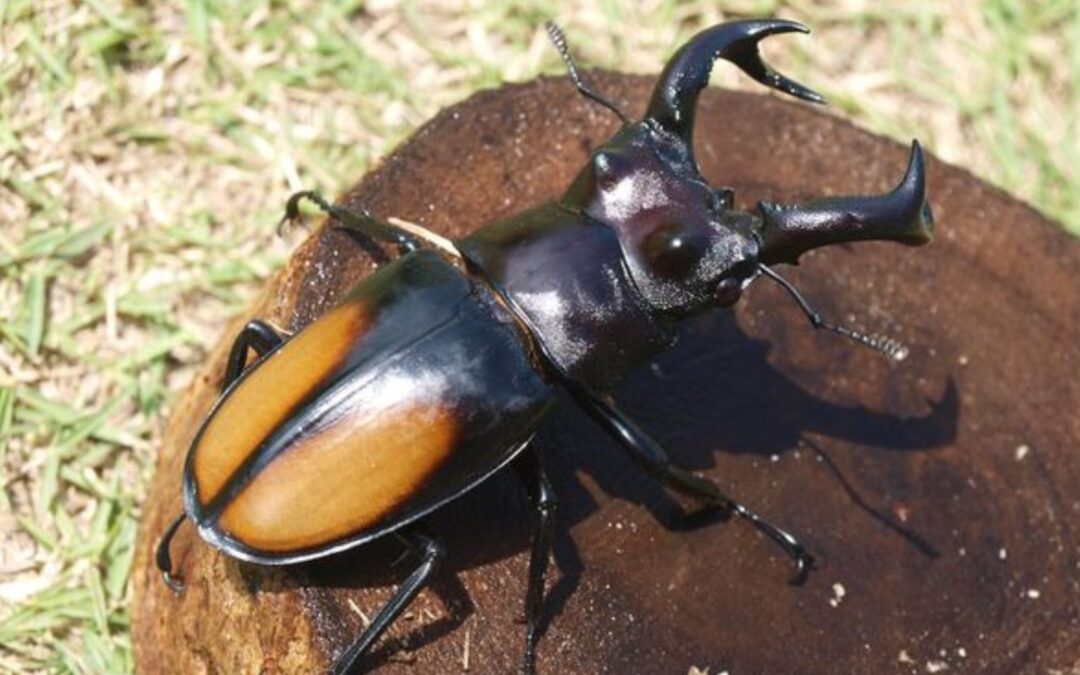Beetles are one of the most diverse groups of insects, with over 350,000 species known worldwide. From tiny, colorful ladybugs to the mighty stag beetles, these creatures play a critical role in ecosystems across the globe. Their wide variety and unique adaptations allow them to thrive in nearly every habitat, from forests and deserts to urban areas. Some beetles contribute to pollination, while others break down organic matter, recycle nutrients, and control pests. In this guide, we’ll explore all types of beetles (A to Z), highlighting their fascinating traits and their importance in nature.
Introduction to All Types of Beetles (A to Z)
Beetles represent the largest group of insects, with over 350,000 known species and possibly millions more yet to be discovered. These creatures belong to the order Coleoptera, characterized by their hard, protective forewings and remarkable diversity. Beetles inhabit every continent, from the deepest rainforests to the driest deserts, and they thrive in nearly every environment on Earth. Their size ranges from minuscule to enormous, with some beetles measuring less than a millimeter, while others grow to several inches in length. Despite this diversity, all beetles share one common feature: they play a crucial role in maintaining ecological balance. They serve as pollinators, decomposers, and pest controllers, contributing immensely to the health of ecosystems.
As you explore the world of beetles from A to Z, you’ll discover the wide variety of these insects, each with its unique characteristics, behavior, and contribution to the environment. From the brightly colored ladybug to the powerful stag beetle, these creatures show extraordinary adaptations that help them survive and thrive in their specific habitats. Beetles help break down organic matter, recycle nutrients into the soil, and control pests, making them indispensable for agricultural and natural environments. While some beetles, like the Japanese beetle, can be pests to plants and crops, many others benefit humans by reducing the need for chemical pest control. With their fascinating life cycles, complex behaviors, and vital environmental roles, beetles continue to be one of nature’s most successful and resilient creatures.
All Types of Beetles (A to Z): A – Acorn Weevil: A Unique and Vital Insect

The Acorn Weevil stands out among beetles due to its specialized feeding habits. Female weevils burrow into acorns to lay their eggs, and when the larvae hatch, they feed on the acorn’s contents. Over time, they hollow out the nut, leaving an empty shell behind. This process might seem destructive, but Acorn Weevils play an essential ecological role. They help break down acorns, which might otherwise remain on the forest floor for long periods, preventing the natural recycling of nutrients.
Despite their small size, Acorn Weevils serve as a significant part of forest ecosystems. Their lifecycle demonstrates the intricate relationship between insects and plants, particularly how beetles interact with the trees that surround them. Acorn Weevils help maintain the balance of these environments by facilitating decomposition, which allows for healthier soil and a more dynamic ecosystem. Without these beetles, acorns would accumulate, preventing new growth and damaging the health of forests. By understanding their role, we can better appreciate the value of even the smallest creatures in the natural world.
All Types of Beetles (A to Z): B – Bess Beetle: A Vital Decomposer in Forests

Bess Beetles play a critical role in forest ecosystems by breaking down decaying wood. Using their powerful jaws, they tear into rotting logs and stumps, feeding on the decomposing material. These beetles rely on symbiotic bacteria in their gut to help digest the tough cellulose found in wood. As they consume the wood, they release vital nutrients back into the soil, promoting the growth of plants and enriching the environment. By recycling dead plant matter, Bess Beetles ensures that forest floors remain healthy and fertile, supporting new generations of plant life.
Beyond their ecological importance, Bess Beetles also exhibit fascinating social behavior. They live in small, communal groups where they communicate by tapping their heads and abdomens, a behavior that is uncommon among beetles. This form of communication likely helps them coordinate activities, especially when foraging or managing their food sources. The cooperation between individuals in a Bess Beetle colony demonstrates the complexity of their social structures, making them an interesting subject of study for entomologists. Their unique combination of environmental contribution and social behavior highlights why Bess Beetles are essential to maintaining the delicate balance of forest ecosystems.
All Types of Beetles (A to Z): C – Carpet Beetle: A Hidden Household Pest
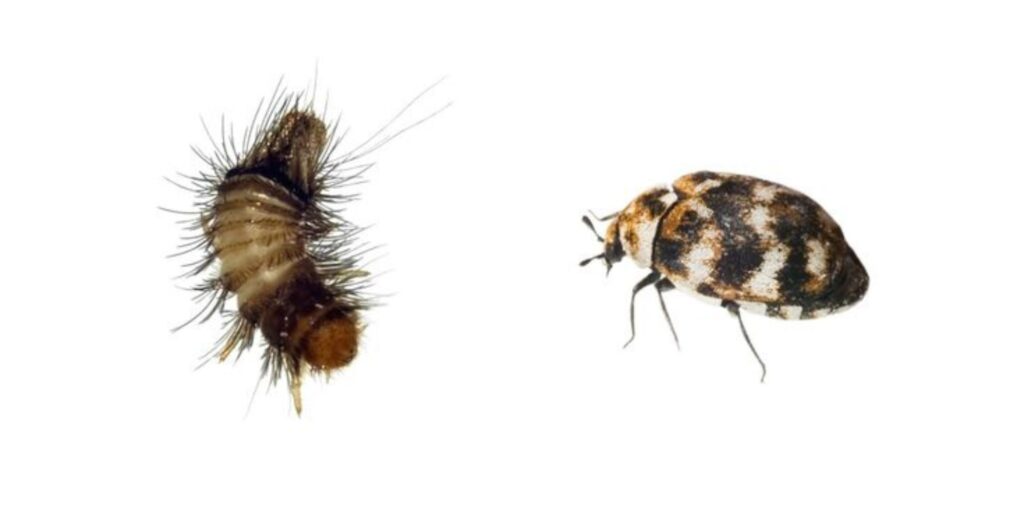
The Carpet Beetle is a notorious pest known for its destructive feeding habits. While adults primarily feed on pollen and nectar, their larvae cause the most damage to household items. These tiny, worm-like larvae prefer to feed on animal-based materials such as wool, silk, feathers, and even fur. As they consume these materials, they leave behind irregular holes and unsightly damage to carpets, clothing, and upholstery. Because they can thrive in hidden places like closets, attics, and under furniture, Carpet Beetles often go unnoticed until the damage becomes severe.
Despite their ability to damage fabric, Carpet Beetles do not pose a direct threat to human health. However, their presence can lead to costly repairs and replacements of textiles. Effective pest management requires identifying and eliminating their breeding sites, which often include dried plant or animal products. Regular cleaning, vacuuming, and laundering can help prevent infestations, as Carpet Beetles are drawn to organic materials that accumulate in corners or under furniture. By understanding their behavior and taking preventative measures, homeowners can minimize the risk of Carpet Beetles causing lasting damage to their belongings.
All Types of Beetles (A to Z): D – Dung Beetle: Nature’s Efficient Recycler
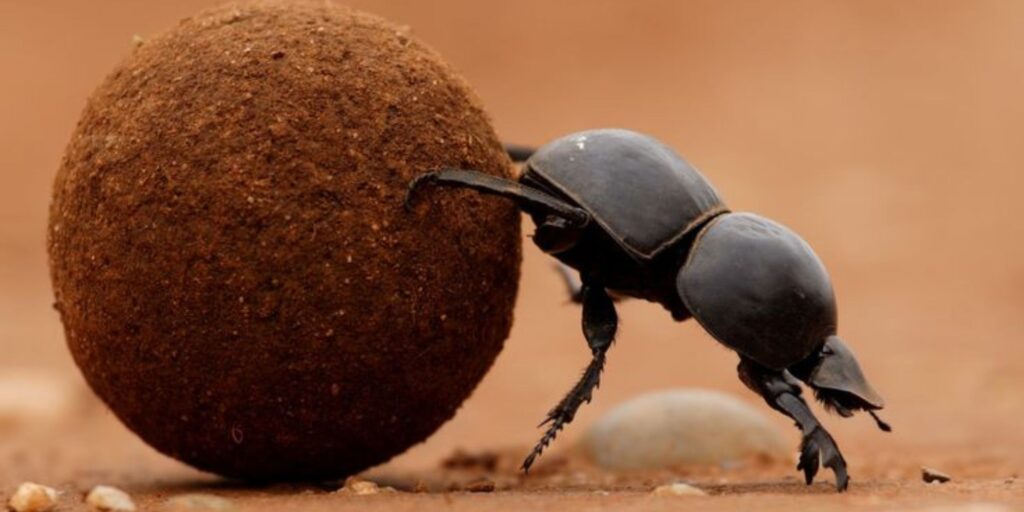
Dung Beetles serve as nature’s cleanup crew by feeding on feces, mainly from herbivores, and recycling essential nutrients back into the soil. These beetles are incredible engineers, rolling dung into compact balls and burying them underground. In doing so, they break down organic matter that would otherwise accumulate, helping to maintain clean environments. As they bury the dung, they enrich the soil with nutrients, promoting plant growth. This process benefits agriculture, as healthier soil leads to stronger crops, making Dung Beetles vital to farming systems.
Beyond recycling nutrients, Dung Beetles also play an essential role in controlling parasites. Many parasites, such as flies, breed in animal dung, and their larvae can negatively impact animal health. By removing and burying the dung, Dung Beetles reduce the breeding grounds for these pests, ultimately contributing to the health of herbivores and the broader ecosystem. Their work promotes biodiversity, as healthy ecosystems depend on the careful management of waste and decomposition. Dung Beetles are a prime example of how small creatures make a significant difference in maintaining ecological balance and ensuring the health of the environment.
E – Elm Leaf Beetle: A Persistent Threat to Elm Trees
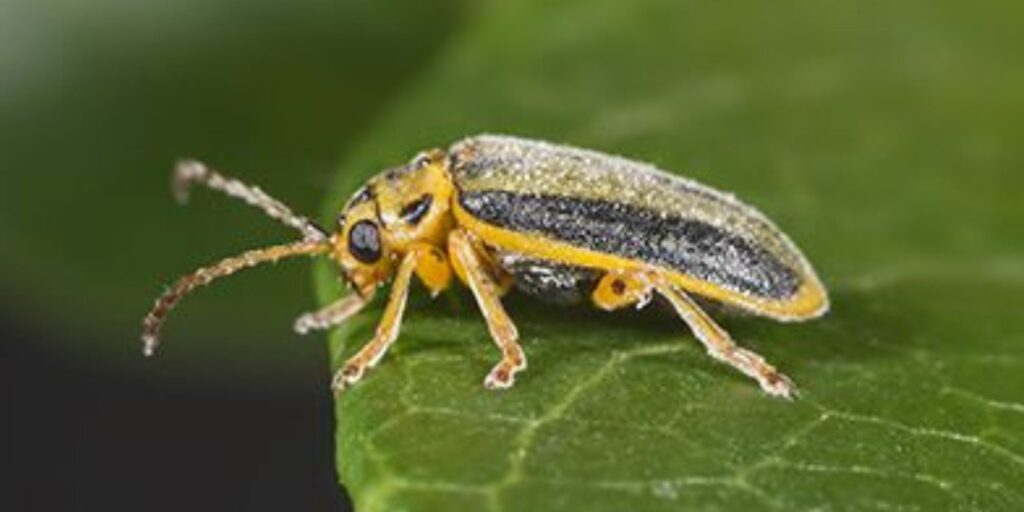
The Elm Leaf Beetle poses a serious threat to Elm trees, which are common in temperate regions across the globe. Adult beetles feed on the leaves of these trees, causing them to wither, discolor, and die. As the beetles continue to consume the foliage, the leaves gradually become weaker, hindering the tree’s ability to produce nutrients through photosynthesis. This damage often results in the trees becoming stressed, and in severe infestations, it can lead to the death of the tree. Elm trees, known for their size and shade, are an important part of urban landscapes and natural forests, making the impact of the Elm Leaf Beetle even more significant.
The larvae of the Elm Leaf Beetle contribute to the destruction as well. These larvae hatch from eggs laid on the tree’s leaves and immediately begin feeding. They consume large portions of the foliage, causing further defoliation. The combination of adult beetle feeding and larval activity results in severe leaf loss, weakening the tree’s ability to thrive. Over time, repeated defoliation can make the tree more vulnerable to diseases, other pests, and environmental stress. Elm Leaf Beetles do not directly harm humans, but their impact on Elm trees can be devastating to both natural and urban environments. Managing these pests requires early detection, removal of affected leaves, and sometimes the use of insecticides to prevent large-scale infestations. Without proper management, Elm trees, especially younger ones, face significant risks that can harm entire ecosystems and damage landscapes. Preventing these beetles from spreading is crucial to maintaining healthy and vibrant Elm populations.
All Types of Beetles (A to Z): F – Firefly Beetle: Nature’s Glowing Wonder
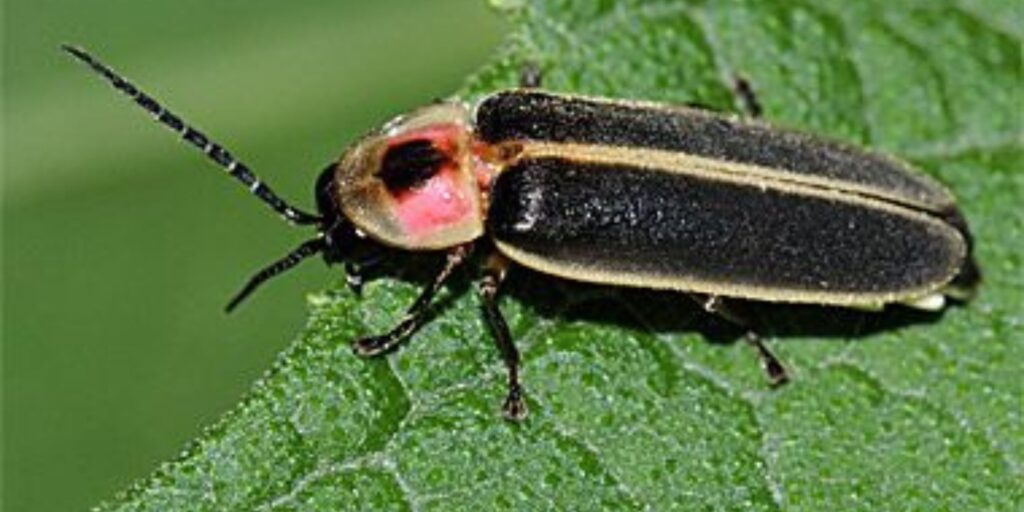
Firefly Beetles are famous for their ability to produce light, a fascinating trait known as bioluminescence. This natural light production occurs through a chemical reaction in specialized cells called photocytes, which contain the enzyme luciferase. The reaction produces light without generating heat, making it highly efficient. Fireflies use this glow for a variety of purposes. Most notably, they rely on it to attract mates, with males emitting specific light patterns to signal their presence and appeal to females. Additionally, the light can serve as a defense mechanism, warning potential predators of their unpalatability or toxicity. The ability to glow makes fireflies one of nature’s most captivating and visually stunning creatures.
Firefly Beetles are commonly found on warm summer evenings, especially in areas with high humidity, such as wetlands, forests, and gardens. Their bioluminescence is not only mesmerizing but also varies in intensity and pattern depending on the species. Different species use unique flash patterns and durations, allowing them to communicate and identify one another. Some fireflies flash in unison, creating a synchronized display that adds to the magical atmosphere of summer nights. These beetles do more than just captivate with their glow; they also play an essential ecological role. As larvae, they feed on small invertebrates, including snails and worms, helping to control pest populations. By understanding firefly behavior and its role in ecosystems, we can better appreciate the value of these glowing beetles and work to preserve their habitats.
G – Ground Beetle: Nature’s Nighttime Pest Controller
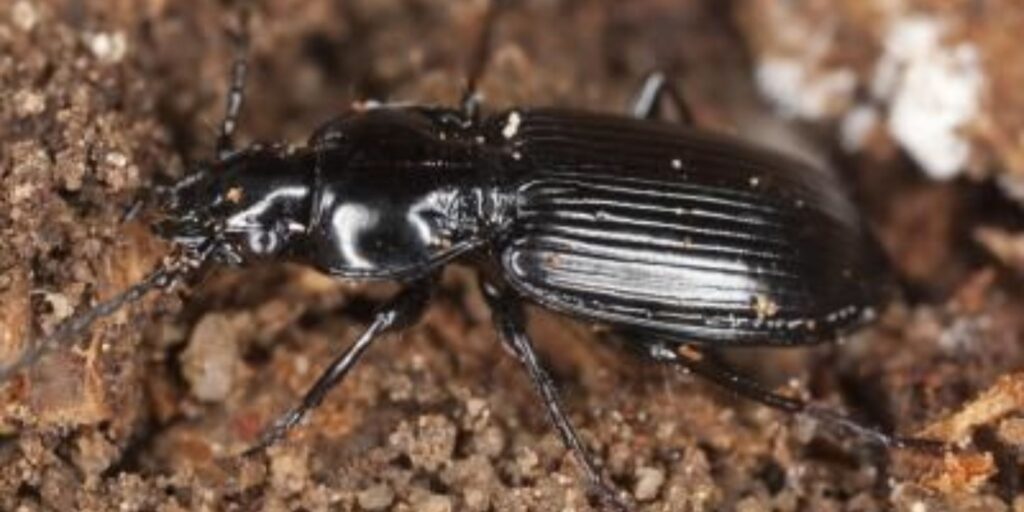
Ground Beetles are carnivorous insects that serve a vital role in maintaining balance in ecosystems by controlling pest populations. These beetles hunt down and feed on a variety of insects, including harmful pests that damage crops and plants. Their primary diet consists of other invertebrates, such as aphids, slugs, and caterpillars, which makes them especially beneficial in agricultural and garden environments. By naturally reducing pest numbers, Ground Beetles help reduce the reliance on chemical pesticides, making them a key ally for organic farming and sustainable gardening practices.
Known for their speed and agility, Ground Beetles are equipped with strong, well-developed legs that allow them to run quickly across the ground in search of prey. Most of their hunting activity takes place at night, as they are nocturnal by nature. This behavior helps them avoid many of the predators that might otherwise pose a threat during daylight hours. In addition to their role in pest control, Ground Beetles also help improve soil health as they often reside in the soil and contribute to the breakdown of organic matter. By encouraging Ground Beetles in gardens and fields, farmers and gardeners can foster a more balanced and healthy environment, reducing the need for chemical intervention while promoting biodiversity.
H – Horned Dynastid Beetle: A Giant of the Insect World
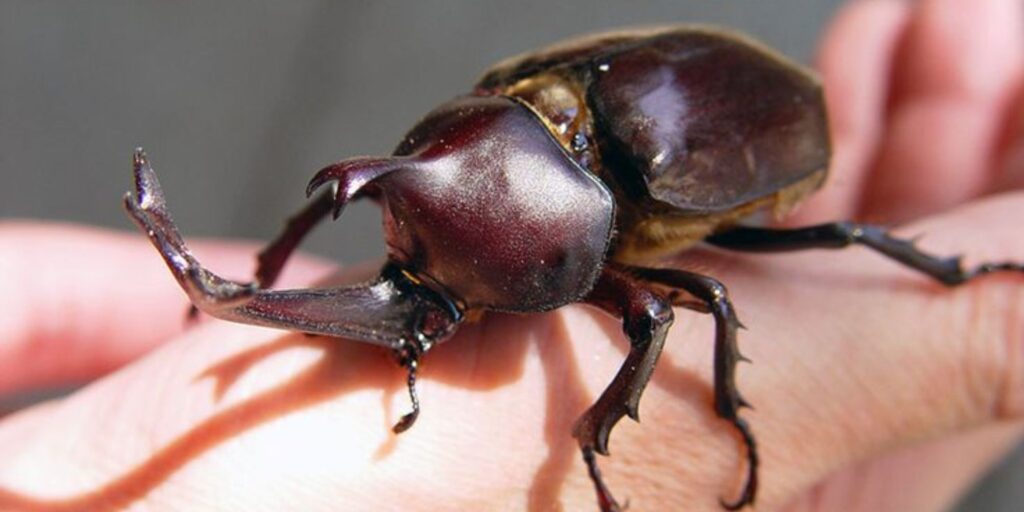
The Horned Dynastid Beetle stands as one of the largest beetles in the world, making it a captivating creature for both entomologists and nature enthusiasts. Males, in particular, are known for their impressive, large horns that curve outward from their heads. These horns serve a specific purpose during mating season when males compete with one another for dominance. The horned beetles engage in intense battles, where they use their horns to push, shove, and grapple with rival males, each trying to assert its superiority. These physical contests can be quite dramatic, as the male beetles vie for the right to mate with females. Despite their dramatic horned displays, these beetles are not aggressive toward humans and typically avoid direct contact unless provoked. Their sheer size and powerful appearance make them stand out in the insect world, leaving a lasting impression on those who come across them in the wild.
While the Horned Dynastid Beetle may appear fierce and intimidating, its diet consists mainly of plant-based materials. These beetles are herbivores, feeding on various fruits, leaves, and tree sap. This diet sustains their large size, particularly in males who grow larger than females due to the energy needed to maintain their formidable horns. They are often found in forests, where they can feed on decaying fruit and tree sap, contributing to the decomposition process. Despite their massive horns and fierce appearance, the Horned Dynastid Beetle is largely peaceful, spending most of its life foraging for food rather than engaging in conflict. Their unique blend of strength, size, and herbivorous habits make them an intriguing part of the insect world.
All Types of Beetles (A to Z): I – Iris Weevil: A Destructive Pest to Iris Plants

Iris Weevils are notorious for their destructive impact on iris plants, which are popular in gardens and landscapes. These beetles target the roots and bulbs of irises, feeding on vital plant tissues. As they feed, they weaken the plant, making it more susceptible to diseases and environmental stresses. This feeding can cause irreparable damage, leading to stunted growth, poor flowering, and even death. Iris Weevils are especially problematic in iris gardens, where large numbers of plants may suffer from an infestation.
The Iris Weevil’s life cycle starts when the female lays eggs inside the iris bulbs. The larvae hatch and burrow into the plant’s tissues, feeding as they go. As they feed, they damage the bulb and root system, further weakening the plant. This damage spreads from the affected plant to others nearby, creating widespread problems in the garden or flower bed. While Iris Weevils do not harm humans, they can cause significant damage to gardens. Gardeners, especially those who grow irises for ornamental or commercial purposes, face challenges in managing these pests. Control methods include removing and destroying affected bulbs, applying insecticides, and maintaining healthy, well-drained soil. Preventing and managing Iris Weevil infestations is crucial for protecting iris gardens and ensuring the long-term health of these beautiful plants.
All Types of Beetles (A to Z): Japanese Beetle: A Persistent Garden Pest

The Japanese Beetle is a notorious pest that causes significant damage to garden plants. Native to Japan, it has become widespread in the United States, where it has established itself as a threat to many types of crops and ornamental plants. These beetles are particularly attracted to plants like roses, beans, and grapevines, and their feeding habits leave a distinctive trail of damage. Japanese Beetles consume plant leaves, leaving behind only the veins, a condition known as skeletonization. This feeding weakens the plants, stunts growth, and can lead to the death of the plant if the infestation is severe.
Adult Japanese Beetles emerge in late spring to early summer, where they feed on plant leaves and flowers. After feeding, the females lay eggs in the soil. These eggs hatch into larvae, which begin feeding on the roots of grass and other plants. The larvae can damage lawns and agricultural fields, contributing to the beetles’ widespread impact. The combination of adult and larval feeding makes the Japanese Beetle a dual threat to both ornamental gardens and crop production. To control Japanese Beetles, gardeners often use traps, insecticides, or introduce natural predators like nematodes to manage the larvae. Regular monitoring and early intervention are essential to prevent widespread damage, especially during peak feeding times in the summer. Proper management can reduce the beetles’ impact and help protect valuable plants from destruction.
All Types of Beetles (A to Z): K – Kateretid Beetle: Nature’s Decomposer
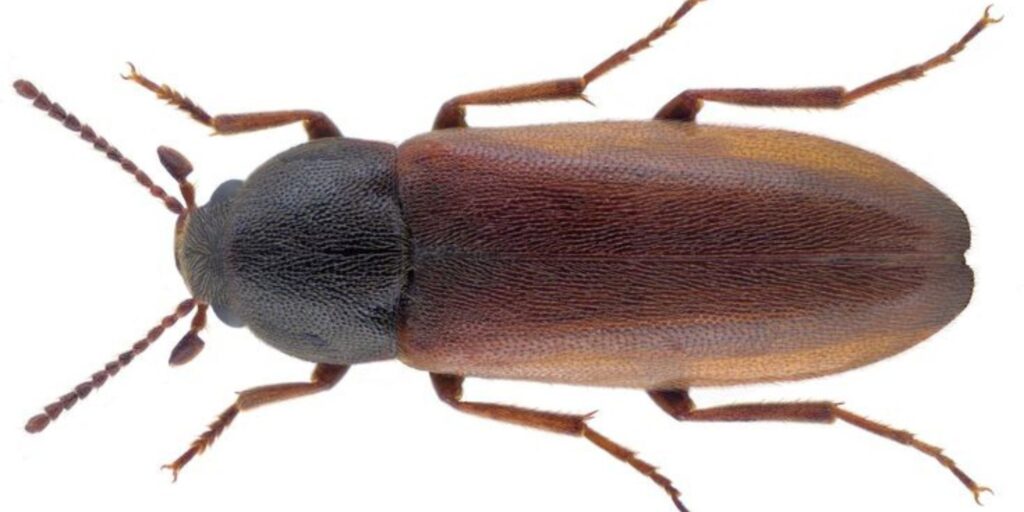
The Kateretid Beetle is a small, yet remarkable insect known for its ability to thrive in decaying wood and plant matter. These beetles play a crucial role in forest ecosystems by breaking down cellulose, a complex compound in plant fibers. This ability allows them to decompose organic material, recycle nutrients, and return them to the soil. As they feed on decaying wood, they help speed up the breakdown process, ensuring that nutrients from dead plant matter are reintroduced into the ecosystem. This process is vital for maintaining healthy forest floors and promoting new plant growth.
Kateretid Beetles are not only important decomposers but also contribute to the overall health of the environment. By breaking down plant material, they create conditions that allow other organisms to thrive. Their work aids in the recycling of organic material, supporting biodiversity and soil health. These beetles are often found in decaying logs, fallen leaves, or rotting plant matter in forests and woodlands. Their presence indicates a healthy, functioning ecosystem. The Kateretid Beetle’s ability to process cellulose and decompose organic material makes it an essential player in the natural recycling system, ensuring that ecosystems remain balanced and efficient.
All Types of Beetles (A to Z): L -Ladybug (Ladybird Beetle): A Gardener’s Ally
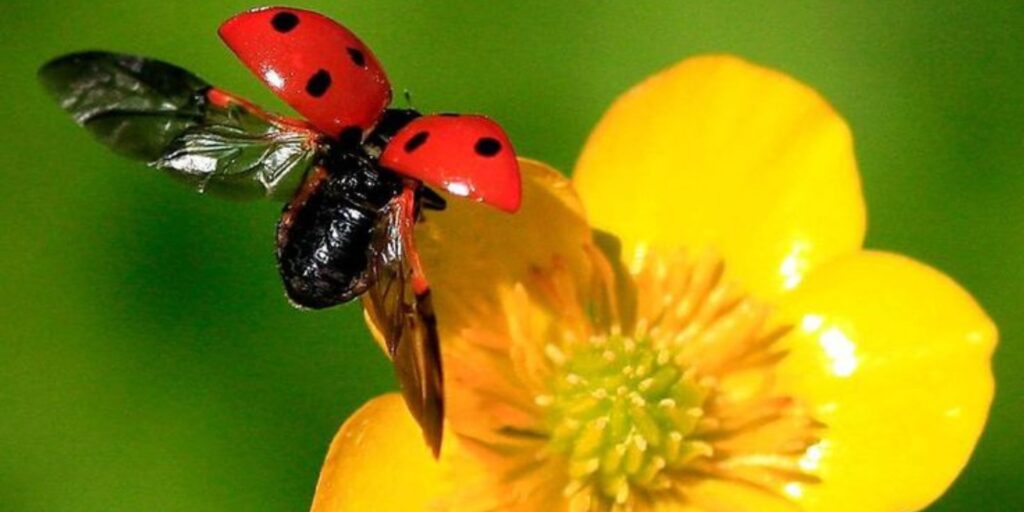
Ladybugs, also known as Ladybird Beetles, are small, colorful insects recognized for their bright red bodies adorned with black spots. These beetles are highly valued by gardeners and farmers due to their natural ability to control pest populations. Ladybugs primarily feed on aphids, mealybugs, and other plant-eating insects that can damage crops and ornamental plants. By reducing the number of harmful pests, ladybugs help maintain healthy plants, making them a natural alternative to chemical pesticides. Their presence in gardens is a sign of a balanced, thriving ecosystem.
In addition to their role in pest control, Ladybugs are considered symbols of good luck in various cultures. People often associate them with positive outcomes, believing that seeing a ladybug brings good fortune. This cultural significance adds to the charm of these small but beneficial beetles. Ladybugs can be found in gardens, fields, and forests, where they help keep the insect population in check. Their ability to efficiently manage pests while posing no harm to humans or the environment makes them a valuable part of sustainable gardening practices. By encouraging Ladybug populations, gardeners can promote healthier, pesticide-free environments and enjoy the benefits of these lucky little insects.
All Types of Beetles (A to Z): M – Mountain Pine Beetle: A Threat to Pine Forests
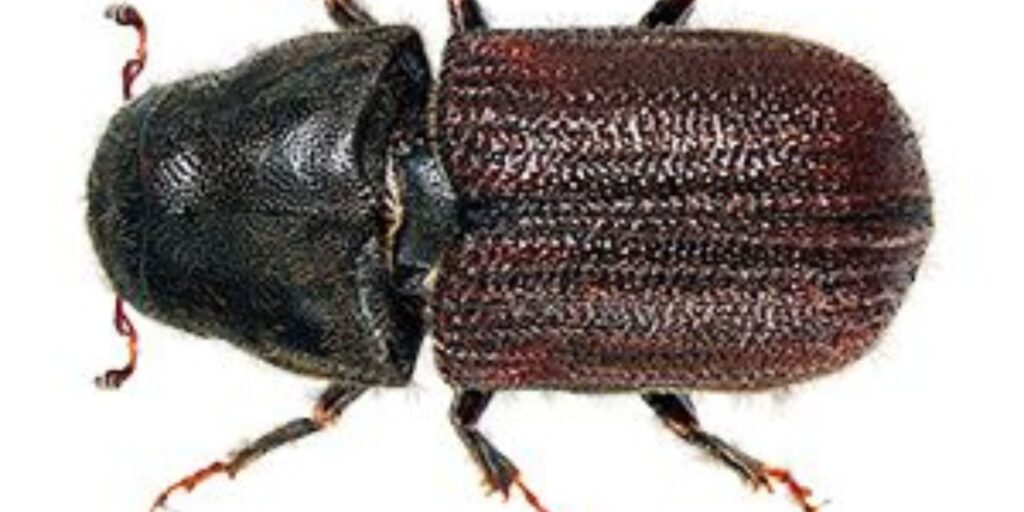
The Mountain Pine Beetle is a notorious pest known for its destructive impact on pine forests across North America. These beetles target pine trees, burrowing into the bark to lay their eggs. Once the larvae hatch, they feed on the inner bark, disrupting the tree’s ability to transport water and nutrients. This feeding process ultimately kills the tree. Infected trees often show visible signs of distress, such as yellowing needles and early needle drop. The Mountain Pine Beetle infestation has become a serious concern, causing significant damage to large areas of pine forests.
In recent years, the severity of Mountain Pine Beetle outbreaks has increased, largely due to changing climate conditions. Warmer winters and hotter summers have allowed these beetles to thrive and expand their range. As temperatures rise, the beetles can survive in higher altitudes and latitudes, leading to more widespread infestations. The damage caused by the Mountain Pine Beetle not only affects the health of individual trees but also impacts the entire forest ecosystem. Dead or weakened trees create a loss of habitat for wildlife, and the loss of pine trees affects timber industries. Forest management practices that target early detection and prevention can help limit the damage caused by these beetles. Managing the spread of Mountain Pine Beetles is essential for protecting pine forests and maintaining the balance of these important ecosystems.
N – Nebria Beetle: A Key Predator in Mountainous Regions

The Nebria Beetle is a type of ground beetle found in cool, mountainous regions of Europe and North America. These beetles prefer moist habitats such as riverbanks, streams, and forests, where they can thrive. With their sleek black bodies and quick movements, Nebria Beetles are skilled predators. They feed on smaller insects and other invertebrates, including pests that could potentially harm plants. As a result, they play an important role in controlling pest populations and maintaining ecological balance in their habitats.
Nebria Beetles are often active at night, hunting for prey in the dark. Their ability to adapt to cooler environments makes them well-suited for life in the mountains and other regions with similar climates. These beetles help regulate the populations of smaller insects, keeping the ecosystem in check. By managing pest numbers, Nebria Beetles contribute to the health of their environments. Their presence signals a healthy, functioning ecosystem, where natural predators control insect populations instead of relying on chemical pest control methods. Their role in controlling pests and maintaining ecological balance highlights the importance of ground beetles in natural habitats, especially in forests and wetland areas.
All Types of Beetles (A to Z): O – Olive Weevil: A Threat to Olive Trees

The Olive Weevil is a significant pest that threatens olive trees, especially in Mediterranean regions, where olive cultivation is crucial. These beetles lay their eggs on the leaves, fruit, or branches of olive trees. Once the eggs hatch, the larvae burrow into the tree’s tissues, causing severe damage. The larvae feed on the plant’s internal tissues, weakening the tree and leading to damaged leaves, branches, and fruit. This damage not only harms the health of the tree but also reduces the quality and quantity of olive yields.
Olive growers face significant challenges in managing Olive Weevil infestations. The beetles can spread quickly, leading to widespread crop damage if left uncontrolled. To protect their crops, farmers often monitor their trees closely, using various methods to control the beetle population. These methods may include the use of insecticides, traps, or natural predators to help keep the weevils in check. Effective pest management is essential for preventing significant losses in olive production. By actively controlling Olive Weevil populations, growers can protect the health of their olive trees and ensure a steady crop yield.
All Types of Beetles (A to Z): Pink-Spotted Lady Beetle: A Beneficial Predator
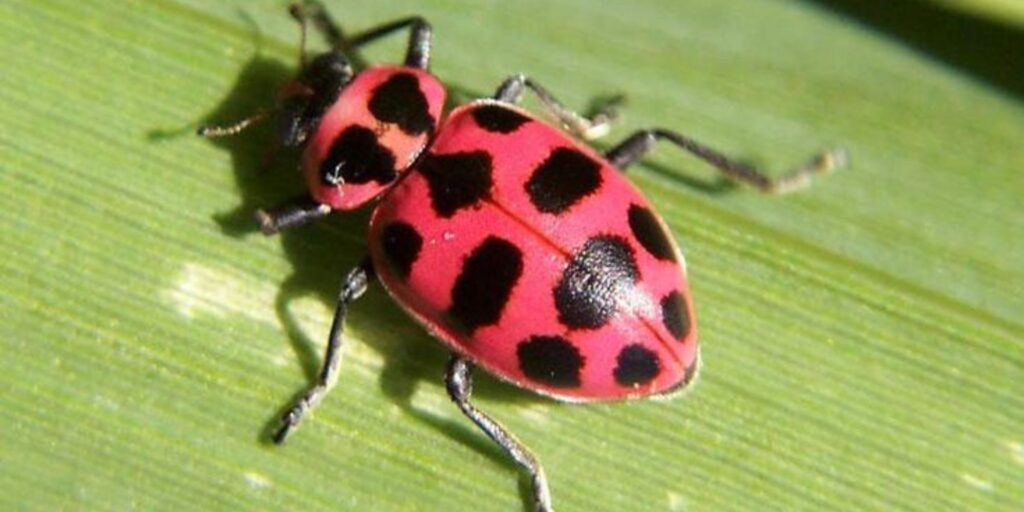
The Pink-Spotted Lady Beetle is a small but effective predator in gardens and agricultural fields. Recognizable by its pale pink to orange body with black spots, this ladybug is beneficial in controlling pest populations. It primarily feeds on aphids, mites, and other small insect pests that damage crops and plants. By keeping pest populations in check, the Pink-Spotted Lady Beetle helps maintain a healthy, balanced garden ecosystem.
Although similar in appearance to other ladybugs, the Pink-Spotted Lady Beetle has some distinct behaviors that make it particularly valuable for natural pest control. Unlike other ladybugs, it prefers feeding on pests that thrive in the undersides of leaves, where aphids often cluster. This makes the beetle highly effective at controlling aphid outbreaks, which are common in many gardens and fields. As the Pink-Spotted Lady Beetle consumes pests, it helps reduce the need for chemical pesticides, making it a more environmentally friendly option for pest management.
Despite being a beneficial insect, the Pink-Spotted Lady Beetle is sometimes mistaken for a pest itself, especially when it invades homes during the colder months. However, these ladybugs do not cause harm to humans or homes. Their primary function is to hunt and consume other insects, benefiting gardeners and farmers alike. Encouraging the presence of Pink-Spotted Lady Beetles can significantly reduce the reliance on chemical pest control methods, contributing to more sustainable agricultural practices.
Q – Queensland Fruit Fly Beetle: A Threat to Fruit Crops

The Queensland Fruit Fly Beetle is a major pest in Australia, particularly affecting citrus crops and other fruit-bearing trees. These beetles lay their eggs in the flesh of the fruit, where the larvae hatch and begin feeding. As the larvae consume the fruit, it begins to spoil, leading to premature fruit drop. This damage not only reduces crop yields but also affects the quality of the remaining fruit. Farmers in regions impacted by this pest face significant challenges in protecting their crops from infestation.
To prevent widespread damage, farmers must closely monitor Queensland Fruit Fly Beetle populations and implement control measures. Methods such as traps, biological control agents, and careful pesticide use can help manage the beetle population. Early intervention is crucial in minimizing the impact on crops. By actively controlling these beetles, farmers can protect their fruit trees, reduce crop loss, and maintain healthy yields. The Queensland Fruit Fly Beetle remains a constant threat to agricultural regions in Australia, requiring vigilant management practices to safeguard the nation’s valuable fruit crops.
R – Rose Beetle: A Destructive Pest to Ornamental Plants
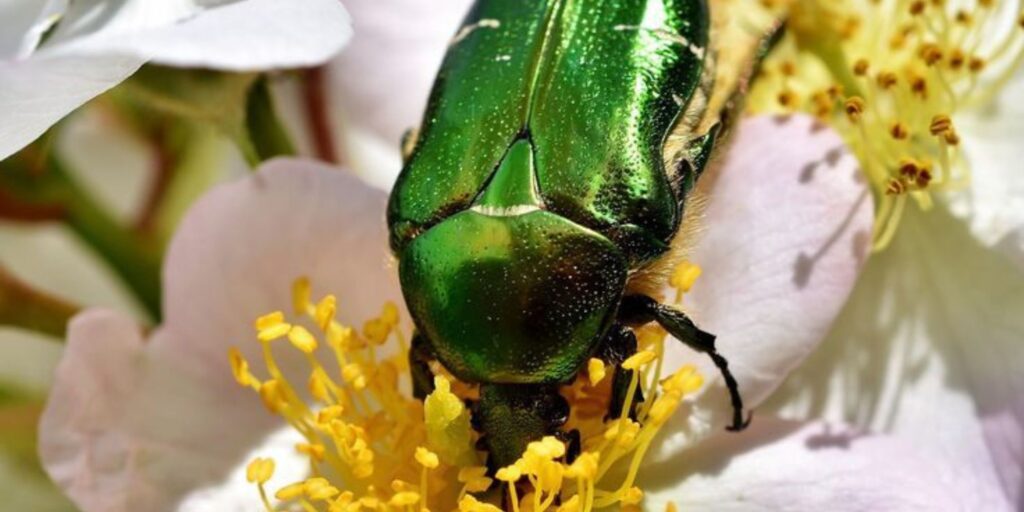
The Rose Beetle is a significant pest that targets roses and other ornamental plants, causing severe damage to gardens and flower beds. These beetles feed on the leaves and flowers, leaving behind holes and skeletonized foliage. This feeding weakens the plants, stunting their growth and diminishing their beauty. As the beetles continue to feed, the damage accumulates, leading to a decline in the overall health of the plants.
In addition to the damage caused by adult Rose Beetles, their larvae also contribute to the plant’s destruction. The larvae feed on the roots of the plants, making them more vulnerable to diseases and environmental stress. This dual attack from both the adult beetles and larvae creates a significant threat to the vitality of ornamental gardens. Because of the Rose Beetle’s destructive nature, gardeners and landscapers must actively monitor their plants and implement pest control measures. Strategies such as introducing natural predators, using traps, or applying targeted insecticides can help reduce the beetle population. Taking action early in the season can prevent major infestations, ensuring that roses and other ornamental plants thrive without the threat of these persistent pests.
All Types of Beetles (A to Z): S – Stag Beetle: A Powerful, Yet Harmless Insect
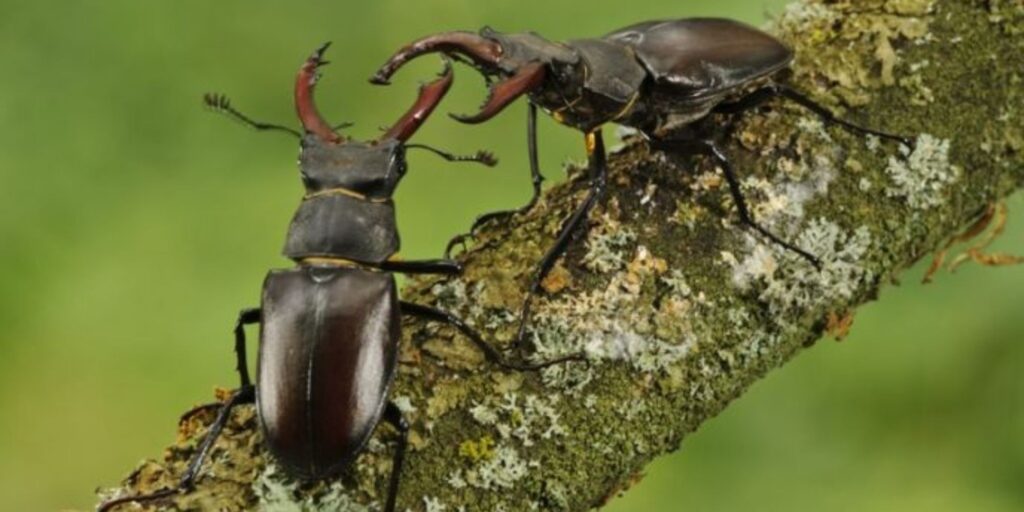
Stag Beetles are among the largest beetles found in temperate regions, especially in Europe and Asia. These impressive insects are best known for the males’ large, antler-like mandibles, which they use during fierce battles with other males. The fights typically occur in the mating season, where males compete for access to females. Despite their intimidating appearance, these beetles are harmless to humans and do not pose a threat. The large mandibles serve more for dominance displays and are not used for feeding or defense against humans.
Stag Beetles play an important ecological role as decomposers. They feed primarily on decaying wood, helping to break down and recycle organic material in forest ecosystems. By feeding on dead wood, they contribute to the decomposition process and promote soil fertility. The larvae of stag beetles spend several years in the soil, feeding on rotting wood before emerging as adults. Their presence in forests is a sign of a healthy ecosystem, where decomposers help maintain balance and recycle nutrients. Stag Beetles may appear fearsome due to their size and striking mandibles, but they are valuable allies in the natural process of decomposition, supporting the growth and health of forests.
All Types of Beetles(A to Z): T – Tiger Beetle: A Fierce Hunter of the Insect World
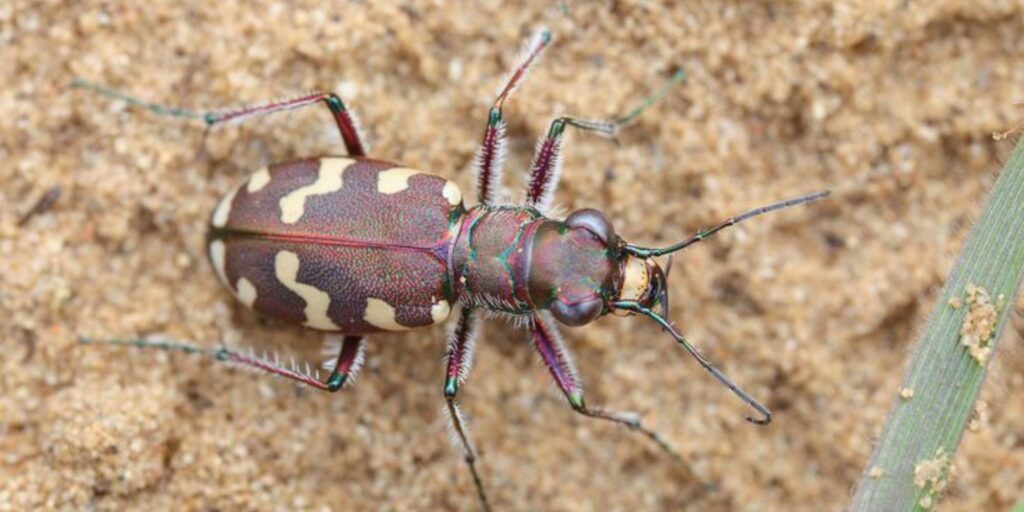
Tiger Beetles are renowned for their aggressive hunting behavior. These predatory beetles actively chase and capture their prey with remarkable speed and precision. Their large, powerful jaws allow them to overpower and subdue their targets quickly. Tiger Beetles do not wait for prey to come to them; instead, they relentlessly pursue smaller insects, making them highly effective predators in their environments. Their speed and agility make them formidable hunters in the insect world.
Tiger Beetles are often found in sandy, open habitats like beaches, deserts, and grasslands. These environments provide ideal conditions for their hunting style. Their bright, metallic coloration helps them blend into their surroundings, offering some protection from predators. Tiger Beetles are highly active and typically hunt during the day, using their keen vision to spot potential prey. The presence of these beetles in various habitats helps control insect populations, preventing certain pest species from becoming too numerous. By preying on other insects, they play a vital role in maintaining balance within their ecosystems. Tiger Beetles are a prime example of nature’s well-adapted predators, equipped with the speed and strength to thrive in harsh conditions.
U – Uncertain Beetle: A Mysterious and Elusive Insect

The Uncertain Beetle, as its name suggests, is known for its elusive and variable nature. These beetles belong to a family of insects about which little is known. They are difficult to study due to their reclusive behavior and the limited information on their habitats. The Uncertain Beetle can be found in a wide range of environments, but it primarily hides in decaying wood or leaf litter, where it feeds on organic matter. Its ability to blend into its surroundings makes it even more challenging to observe in the wild.
Due to its secretive nature, much of the Uncertain Beetle’s life cycle remains a mystery. Researchers continue to study its behavior, but the beetle’s habits are not well documented. The beetle’s preference for dark, hidden spaces makes it difficult to track and understand fully. Despite its elusive qualities, the Uncertain Beetle plays an important role in breaking down organic material, contributing to the process of decomposition in its ecosystem. It helps recycle nutrients back into the soil, supporting plant and soil health. The mystery surrounding the Uncertain Beetle only adds to its intrigue, as scientists continue to explore the habits and habitats of this enigmatic insect.
V – Vine Weevil: A Persistent Threat to Ornamental Plants
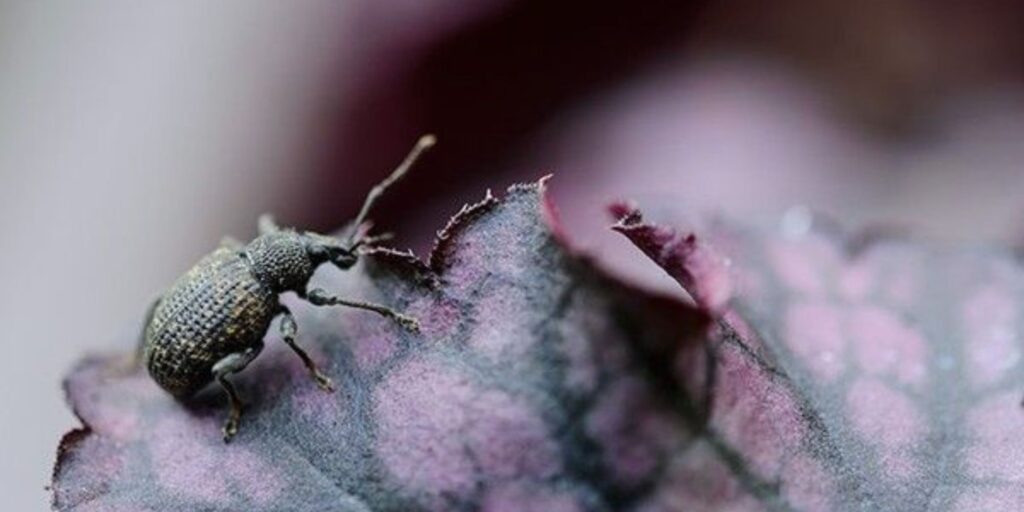
Vine Weevils are well-known pests that target ornamental plants, especially those with fleshy leaves, such as strawberries and geraniums. These beetles cause significant damage to plants by feeding on the leaves, leaving behind distinctive notched edges. The adult beetles usually feed at night, making them harder to spot during the day. Their feeding behavior weakens the plants, reducing their overall health and vitality.
In addition to the damage caused by the adult beetles, the larvae also pose a serious threat. The larvae attack the roots of plants, feeding on them and causing severe damage. This root damage prevents the plant from absorbing water and nutrients, often leading to wilting, yellowing, and even plant death. Vine Weevils are notorious for their ability to hide during the day, staying out of sight in the soil or under plant debris. They become most active at night, making control efforts more challenging. To protect plants from these destructive pests, gardeners must remain vigilant and monitor for signs of infestation, such as notched leaves and wilting plants. Effective pest control measures may include the use of insecticides, natural predators, or nematodes that target the larvae. Early intervention is key to preventing extensive damage from Vine Weevils.
W – Water Beetle: A Vital Predator in Aquatic Ecosystems
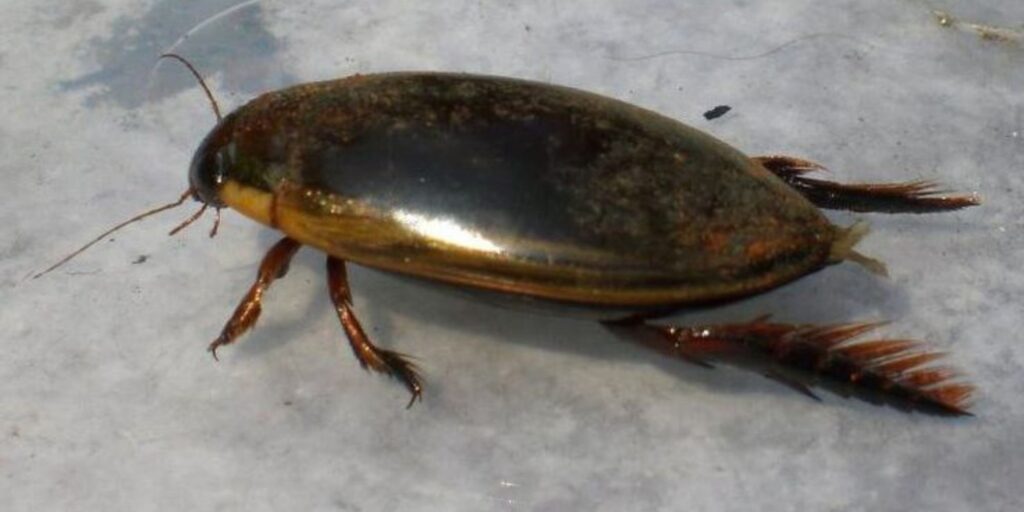
Water Beetles are fascinating aquatic insects found in ponds, lakes, and rivers across the globe. These beetles are skilled swimmers, using their flattened bodies and specialized hydrodynamic legs to move quickly and efficiently through the water. Their ability to navigate various aquatic environments allows them to hunt for food and thrive in their habitats. Water Beetles are often seen gliding across the surface or diving below, where they search for small aquatic organisms to feed on, such as tadpoles, larvae, and even smaller insects.
In addition to their impressive swimming abilities, Water Beetles play a crucial role in maintaining the balance of aquatic ecosystems. As predators, they help regulate the populations of other small aquatic organisms, preventing any one species from becoming too numerous. By controlling the number of larvae and other pests, they contribute to the overall health of water bodies. Water Beetles are an essential part of the food web, providing food for larger predators like fish and amphibians. Their presence indicates a healthy, functioning ecosystem where diverse species can coexist. By feeding on small organisms, Water Beetles maintain the balance of their aquatic habitats and support biodiversity.
X – Xylophilus Beetle: A Key Decomposer of Dead Wood
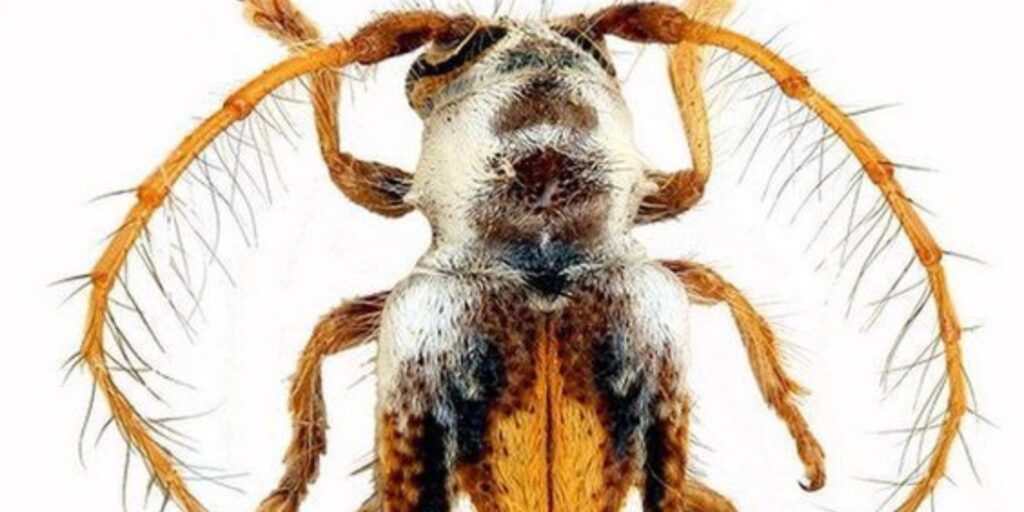
The Xylophilus Beetle is a wood-dwelling insect with an essential role in the decomposition process. This beetle specializes in feeding on dead wood, breaking it down into vital nutrients that enrich the surrounding environment. By consuming decaying wood, the Xylophilus Beetle accelerates the natural decomposition process, helping to recycle organic matter back into the ecosystem. This process promotes soil health, making nutrients more available to plants.
The Xylophilus Beetle’s contribution is especially important in maintaining forest health. Without these beetles, decaying wood would accumulate, leading to nutrient imbalances in the soil. The beetles’ feeding activity ensures that dead trees and branches continue to support the forest ecosystem rather than hinder it. By playing this role, Xylophilus Beetles help sustain the biodiversity of forests, allowing new plant life to thrive. Their presence signals a healthy and balanced environment, where decomposition occurs naturally and efficiently. Through their feeding habits, they help support forest ecosystems and contribute to the ongoing cycle of life and decay in the natural world.
All Types of Beetles (A to Z): Yellow Cucumber Beetle: A Threat to Crops
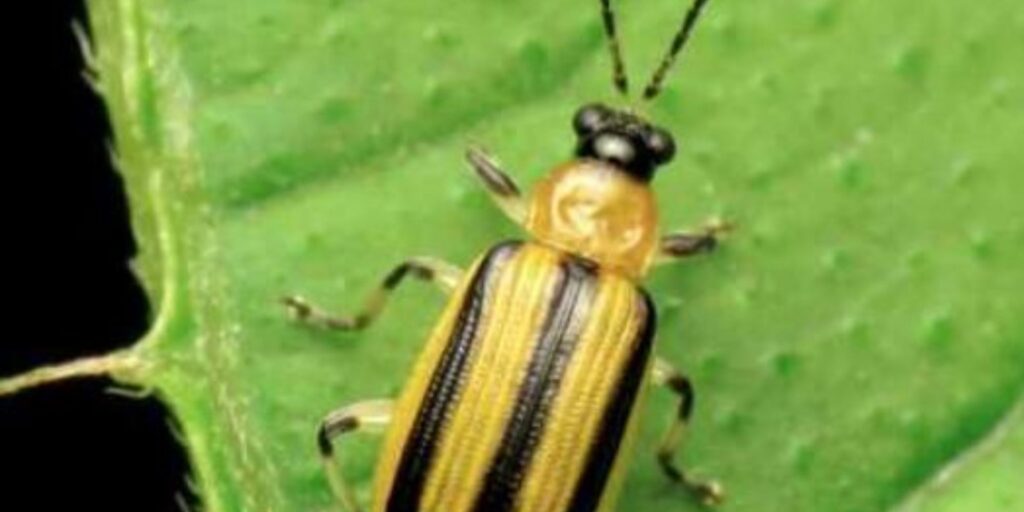
The Yellow Cucumber Beetle is a common and destructive pest that targets cucumber plants and other crops in the gourd family. Easily identifiable by its bright yellow body with black spots, this beetle feeds on the leaves, stems, and fruit of the plant. Its feeding weakens the plant, causing stunted growth and reducing fruit quality. The beetle is most harmful to young plants, as it damages them during the early stages of growth. Left uncontrolled, these beetles can reduce crop yields significantly, leading to substantial losses for farmers and gardeners.
In addition to the direct damage caused by feeding, the Yellow Cucumber Beetle also serves as a carrier for bacterial wilt, a disease that can devastate cucumber crops. The beetles transfer the bacteria from infected plants to healthy ones as they feed. Once the bacteria enter the plant, it quickly spreads, leading to wilting and eventual plant death. This makes the beetles not just a direct threat but also a vector for disease, further amplifying the damage they cause.
Managing Yellow Cucumber Beetles can be challenging, as they reproduce rapidly and can quickly infest a garden or farm. Control methods include crop rotation, which helps interrupt the beetles’ lifecycle and reduce their population. Planting resistant cucumber varieties can also minimize damage. Insecticides, whether chemical or organic, can be effective in controlling infestations, but they must be used carefully to avoid harming beneficial insects. Regular monitoring and prompt action are crucial to keeping these pests under control and preventing significant damage to crops. Practicing good garden hygiene can also help reduce the likelihood of infestation.
All Types of Beetles (A to Z): Z – Zebra-striped Beetle: A Striking and Rare Insect

The Zebra-striped Beetle is easily recognizable by its bold black and white stripes, which make it one of the most visually distinctive beetles. Found in a variety of regions, it stands out for its striking appearance and unique features. This beetle’s striking coloration serves as a warning to potential predators, signaling that it may not be an easy meal. The Zebra-striped Beetle is often seen feeding on plant material and decaying organic matter, playing a role in breaking down organic substances and contributing to the nutrient cycle in its environment.
Although the Zebra-striped Beetle is relatively rare, it adds to the fascinating diversity of the beetle world. Its presence in various habitats enhances the beauty of these environments, as the beetle’s vivid stripes create a stunning contrast against the foliage. Despite being uncommon, the Zebra-striped Beetle plays an important role in ecosystems by feeding on decomposing organic matter. By doing so, it helps recycle nutrients back into the soil, supporting plant growth and contributing to a healthy ecosystem. The Zebra-striped Beetle is a true example of nature’s ability to blend beauty with function, as it serves both as a visual marvel and an active participant in the natural processes that sustain life.
All Types of Beetles (A to Z): Conclusion
Beetles, from the colorful Ladybug to the powerful Stag Beetle, show an incredible variety of species. These insects play key roles in ecosystems, helping with pollination, decomposing organic matter, and controlling pests. With over 350,000 species, beetles remain crucial for maintaining the balance of natural environments. They act as decomposers, predators, and pollinators, fulfilling essential functions to sustain life on Earth.
By studying beetles’ behavior, habitats, and roles, we gain a deeper appreciation for their significance. They help recycle nutrients, promote plant growth, and support ecosystem health. Protecting and understanding beetles ensures the preservation of biodiversity and the ongoing health of ecosystems worldwide. These insects contribute to soil health, pest control, and plant life, making them vital to the environment.
Though small, beetles have a large impact. Protecting and conserving them proves vital for the health of our planet. By valuing their roles and encouraging their protection, we help preserve the complex web of life dependent on these fascinating creatures.

